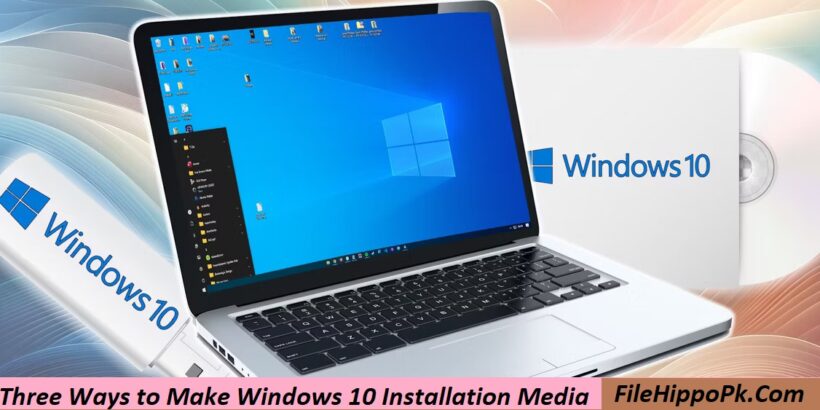Windows 10 restoration or reset will ultimately be necessary, regardless of how you got to it—through a focused upgrade or a brand-new Windows 10 licence. The first step in installing Windows 10 is making installation media. There are several methods to achieve this.
1. Windows Media Creation Tool
The Windows Media Creation Tool is the first and most obvious option for making Windows 10 installation media. You may choose between the 32-bit and 64-bit versions of Windows 10 when downloading the Home or Pro editions with this programme. You have the option to download a single or dual-use Windows 10 ISO file for later disc installation, or you may install straight onto a USB device.
- Download the Windows Media Creation Tool.
- Launch the programme, then choose Make installation media for a different computer. As soon as the Windows 10 ISO has finished downloading inside the programme, you can select which versions to include in your Windows 10 installation media as well as your system architecture and version.
- To finish your installation if you’re installing straight to a USB drive or disc, adhere to the on-screen directions. If you plan to install Windows 10 later, skip to the next part and learn how to make bootable media.
2. Get Windows 10 ISO Direct directly from Microsoft.

Without using the Windows Media Creation Tool, you may get Windows 10 straight from Microsoft. For a long while, the Microsoft Tech Bench Upgrade Programme offered the Windows 10 ISO; however, this option is no longer accessible. There is, nonetheless, an other way to get a Windows 10 ISO.
- Navigate to the download page for Windows 10 ISO.
- To access the Developer Options, press F12.
- To access the Toggle device toolbar, which is located above the website, use CTRL + Shift + M. Press F5 to reload the page after selecting Responsive from the selection option.
- Choose the most recent version of Windows 10 from the drop-down menu when the website has reloaded, then click Confirm the download.
3. Create the Installation Media for Windows 10.

You need to use an ISO burning programme to make bootable Windows 10 installation disc if you downloaded a copy of the operating system to install later. The Windows 10 ISO may be burned on a disc or a USB flash drive. Below are the instructions for both alternatives.
- Install Rufus after downloading it.
- From the drop-down box, choose the intended USB device, and then pick the Windows 10 ISO. The characteristics and burning settings will be automatically updated by Rufus.
- To burn the Windows 10 ISO to the USB device, press the Start button.
Depending on your machine, the burning procedure might take anywhere from 10 to 15 minutes.
